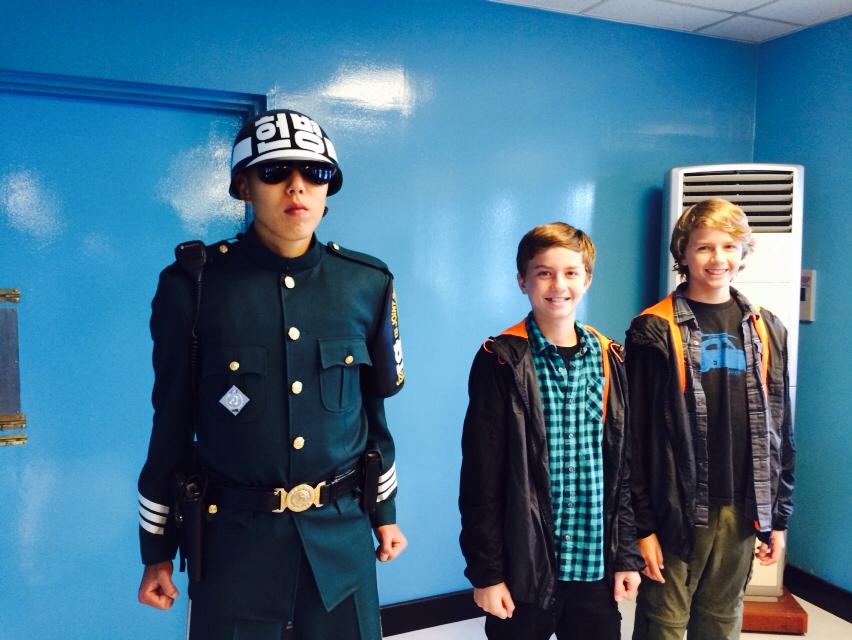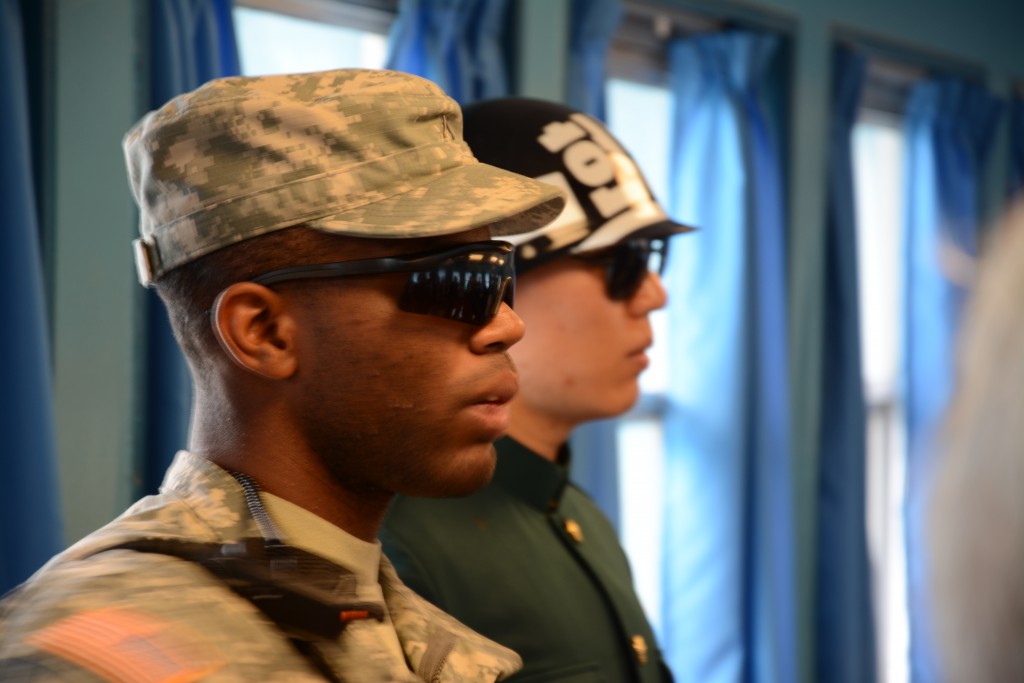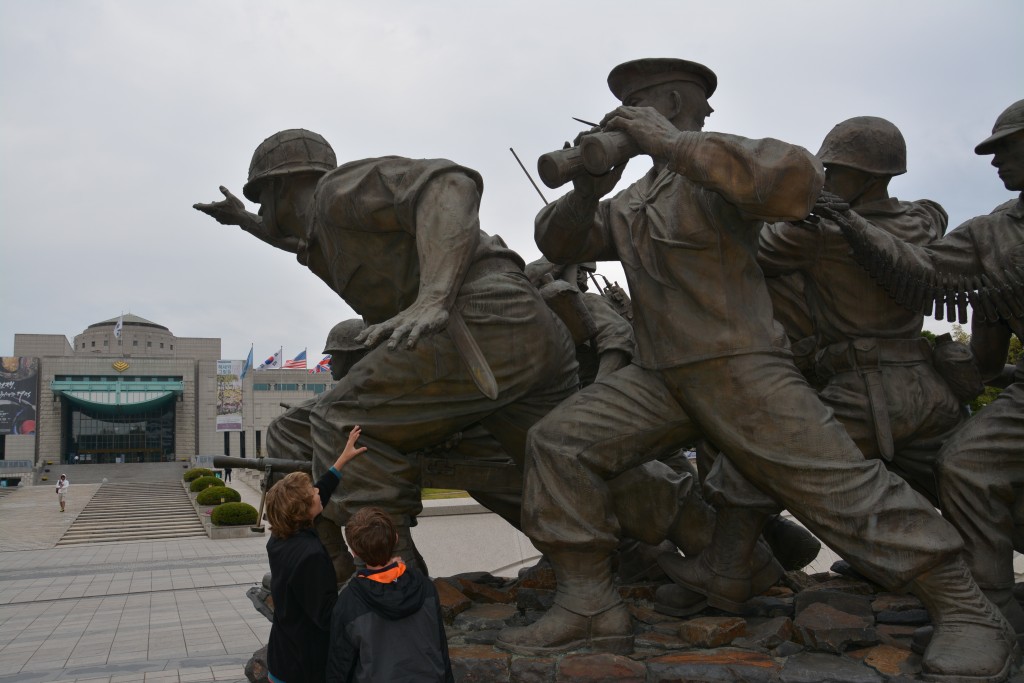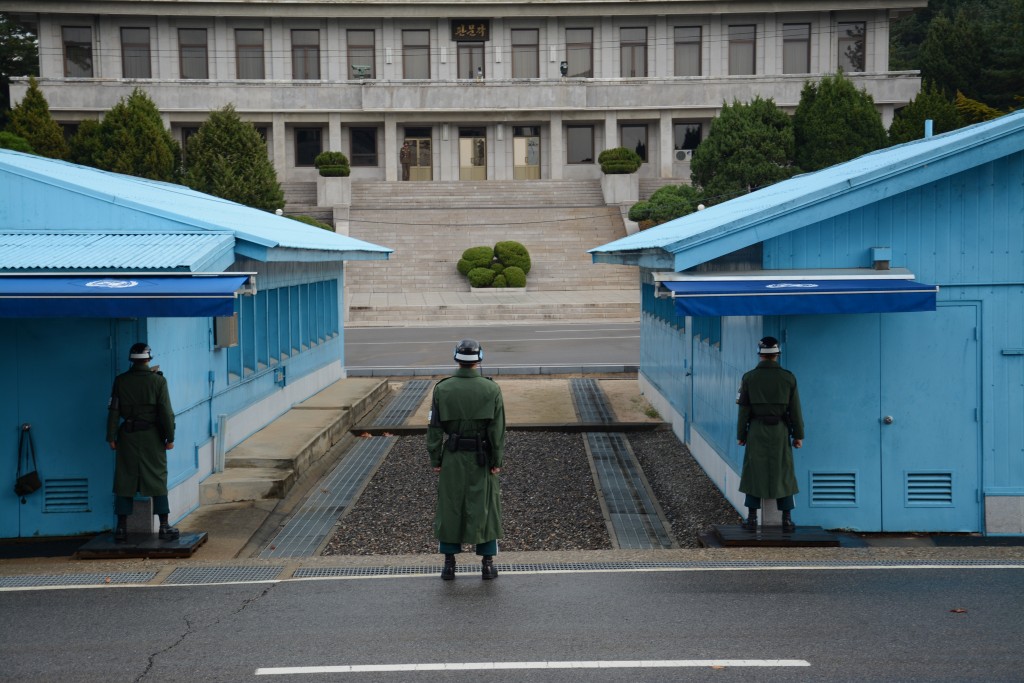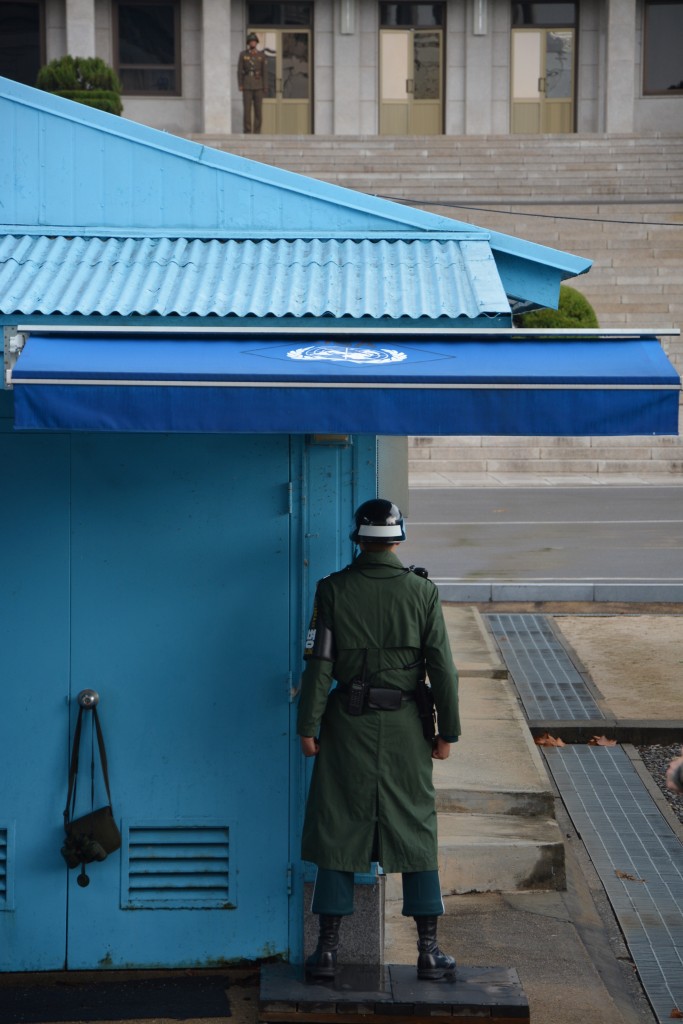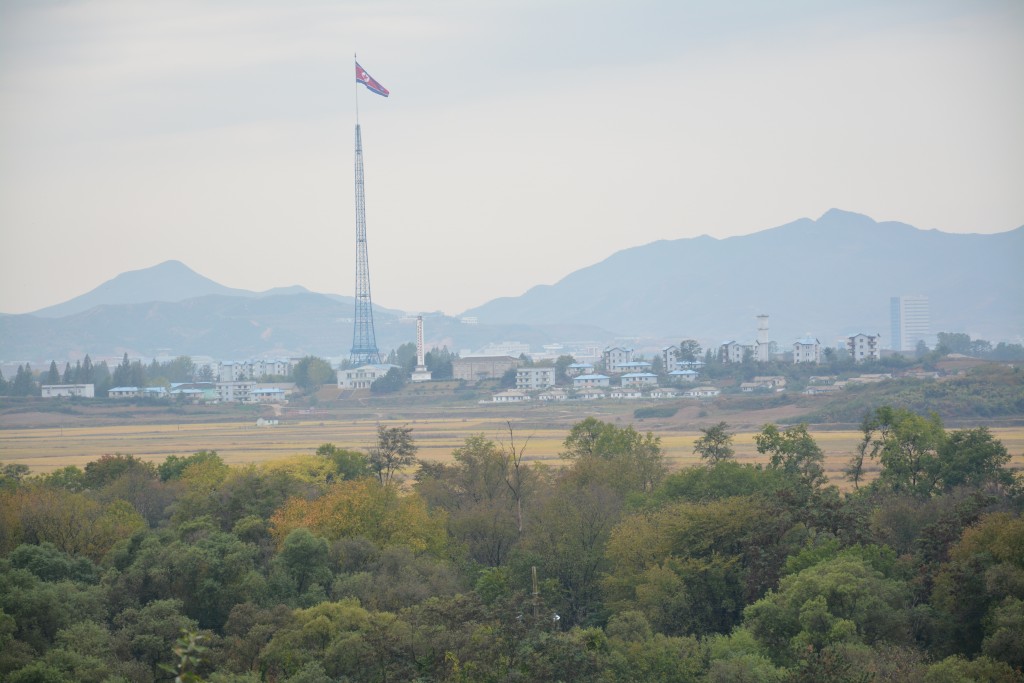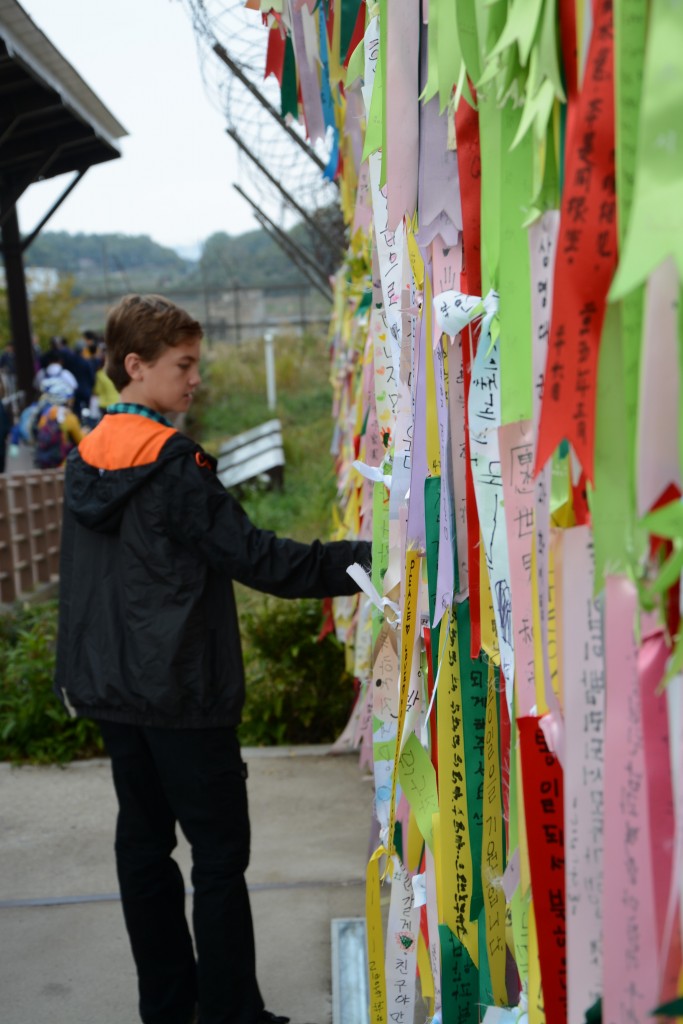South Korea: Discovering a Ceasefire in Action at the DMZ
When we say we went to Korea, everyone always asks “North Korea?” with a joking smile. And, I can honestly answer, “Yes” thanks to the Joint Security Area tour we took at the DMZ (that’s Demilitarized Zone for you non-military folk :-)) But heading to one of the last outposts of the Cold War on a family travel trip doesn’t come without concerns…especially since the day we are to visit is the day Kim Jon Un, leader of North Korea, has announced he will fire missiles to commemorate the founding of the Communist Party in North Korea.
Located about 35 miles from Seoul (South Korea in Northeast Asia), the DMZ is a 2-mile area where no armaments are allowed. It surrounds the ceasefire line agreed upon by South and North Korean forces at the end of the Korean war. On the other side of that zone, North Korea has about 80% of its military force…a fact not overlooked by nearby residents of Seoul. It took about an hour to get to the JSA – Joint Security Area (sometimes called Panmunjom). This is where an international task force meets with South and North Korea leaders to discuss issues.
At the War Memorial of Korea in Seoul (highly recommended to visit in addition to the DMZ to re-enforce the war history learned on the tour), we had learned about how the North Korean forces had pushed South Korean troops back to Busan (a city we would later visit in the southeast). When the United Nations led by U.S. military entered the war, General MacArthur, against the recommendations made by many, attacked by water near Seoul cutting the North Korean forces in half. South Korean and U.N./U.S. forces then pushed North Korean forces all the way up north to the Chinese border. Then, China entered the war and pushed South Korean/U.N./U.S. forces back to about the 38th parallel, the line dividing the two sides at the end of WWII (at the end of WWII, Korea was a Japanese territory and it was given to United Nations/U.S. to lead South and Russia to lead North until independence could be reverted to the country)
After a short film at the Joint Security Area, which did a great job educating us about the history of Korea, the Korean War and the formation of the DMZ, we head out with a U.S. Army officer for a tour. Before we can go, we are asked to sign a waiver that basically says we are entering a active war zone and are doing so at our own risk…yikes! Then, with armed South Korean army guards, we are briefed on the rules…no waving to, pointing at, gesturing at, laughing at…etc…North Korean guards. Apparently, they use it in propaganda videos, or worse it could spark a hostile incident…yikes again! And the guards were everywhere…”They’re always watching us” says the officer that accompanies us.
The first sight we come to is the famous Conference Rooms area – the blue buildings you always see in news clips and documentaries. This is the closest the North and South Korean guards come to each other on a regular basis as they gaze intently at one another over the Military Demarcation Line (or ceasefire line) across a courtyard that is about 30-feet long. The Demarcations Line runs across the courtyard and the gravel on each side is a different color. The North Korean guard posted across the way is nicknamed “Bob” by the army here and the U.S. escort refers to him that way. “Over there is Bob, he’s with us all the time”. You think, wow just one guard, then you look around. Amidst the trees and guard towers all around are other North Korean guards.
Next stop on the tour is the inside of the Conference Room, which is guarded by two South Korean guards that are not messing around. They are always standing at attention ready for action. Why? Because the door behind one of the guards, a door that looks like any other door, actually leads to North Korea. And, we find out, we are actually standing in North Korea territory as we speak! A microphone line down the center of the conference table in the center of the room actually marks the ceasefire line, so we can travel from South Korea to North Korea and back again without ever leaving the building.
Our next stop overlooks what they call “Propaganda Village” just past the DMZ in North Korea. It is said that it was built for show and is not actually inhabited. “Some of the windows are actually painted on.” says our tour guide. Just south of the DMZ on the South Korea side, lies another village where people are incentivized to live by tax-free farming.
Further on in the tour, outside the JSA, we are lead deep underground where South Korea discovered one of several tunnels dug under the DMZ by North Korea (although North Korea says it was not them). The Third Infiltration Tunnel, which we hike through – and it is a rather steep, long, hot hike on the way out – is about 200-feet below ground. It was discovered in 1978 and can move about one army division per hour with arms…they end very close to Seoul…another yikes!
And, finally, we visit the area where families come to hang ribbons in remembrance of family members from whom they were separated at the end of the war.
All in all, the tour was a fantastic way for our family to learn first hand about the Korean War and the unsteady peace that has existed here since the ceasefire was signed in 1953. Although it is still an active war zone, on the day we visited it felt very peaceful and gave an interesting look into two very different communities. It made us very aware of the sacrifices that were made here and families that still live apart because of the split.
For more information on visiting the DMZ or South Korea, visit Korea Tourism Organization.
on Twitter
on Facebook
on Google+







